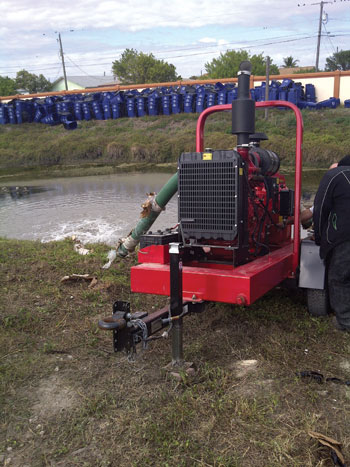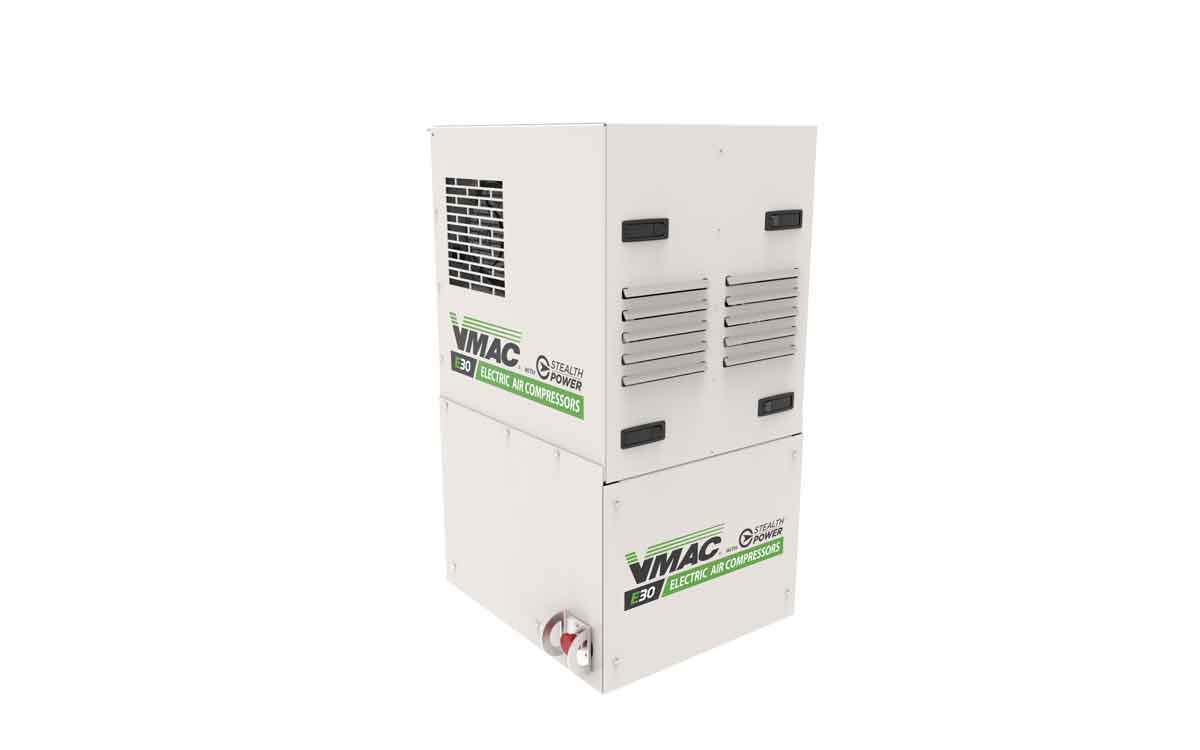Trash Talk
In a construction market filled with competition, contractors don’t have time to waste running around trying to acquire the proper equipment for their job. When it comes to moving liquid on a construction or landscape project, there are a variety of commercial pump options — from submersibles to diaphragm to centrifugal pumps and onward. When it comes to moving liquids that might contain solids, trash pumps are the tools of choice. But before picking a particular trash pump, a pro most know upfront how to figure out machine options, the latest trends, if renting or buying is the right choice and how maintenance can impact his or her workload. This will save time and give a competitive edge in the long run.
The Options
When a basement, retention pond, barge hold, manhole or other area has unwanted water, trash pumps are the go-to machinery to remove that water that has some debris. They can pump clean water as well as water with a certain amount of mud, algae, sand or small detritus. The units often are portable, which adds to their popularity.
The concept of the pump is simple.
“The power source, such as a diesel engine, turns a shaft connected to the pump end,” explains Kirsten Petersen Stroud, marketing manager with Thompson Pump, based in Port Orange, Fla. “Inside the pump end is an impeller, a fan-like piece that rotates at a very high speed and forces the air out of the pump end. This creates a vacuum inside the pump end and draws water into the pump. The water is then discharged through piping or hose and emptied at another location. The water enters the pump through a strainer device submersed in the water and through suction hose connected to the suction end of the pump.”
Trash pumps typically are divided into two categories: wet and dry priming. The wet pumps are manually pumped, and the dry have automatic priming and repriming because of a compressor or vacuum. Some confusion can occur regarding wet pumps, which also are known as self-priming or self-contained units. Thomas Aldridge Jr., sales/engineer with Griffin Dewatering in Houston, explains further.
“The traditional self-priming pump was a trash pump that had an integral chamber that allowed fluid to recirculate in order for the fluid to compress and evacuate the air and create a vacuum in the eye of the impeller,” he says. “This vacuum then allowed atmospheric pressure to force liquid into the pump casing and the impeller pushed it away. Today, the self-priming feature sometimes refers to an external priming device to help evacuate air and create a low-pressure area.
“These devices can include compressors and venturi valves, diaphragm pumps or vacuum pumps depending on the amount of air and the time required to remove the air. It is important to explain to the manufacturer you are working with whether you want a wet self-contained unit or a dry priming-assist unit.”
A variety of models and styles of trash pumps are available. In general, flow rates range from 5 to 1,000 gallons per minute (gpm), head/pressure ranges from 25 to 150 ft and horsepower varies from 0.25 to 50 hp. Also consider attachments and additional equipment that might be needed, such as hoses. These can add cost, and they also need to be installed properly in order to meet the specified powers and flow rates. If noise is a problem, sound attenuated pumping units are available.
Pumps also can be put into another category of open-impeller or enclosed non-clog impeller. Contractors should note that the wear plate on the open impeller requires regular adjustment. For the enclosed impeller, less adjustment is needed because wear does not occur on the blades of the impeller and wear plate as it does on an open impeller.
Aldridge noted that advancements in impellers are the current trend in the industry. “Making sure that the impeller is capable of handling solids or stringy materials is one of the areas of focus, as well as hydraulic capabilities and performance with less power,” he notes. Smaller pumps (with a lighter weight and lower cost) recently came to the market, Petersen Stroud adds. Improvements in oil lubrication, faster priming and less maintenance also are changing today’s trash pump market.
Costs

“You must keep in mind that certain applications require certain pumps to perform the job most effectively,” says Petersen Stroud. “The best method of choosing the correct pump is to look at pump performance curves supplied by the manufacturer of the pump. The pump performance curve shows the capabilities of the pump at different volumes.”
Just like choosing a qualified manufacturer, make sure you rent from a rental company with a proven track record and experienced, knowledgeable personnel.
Maintenance
All machinery requires maintenance, but the task doesn’t have to be daunting. Basic service on trash pumps includes maintaining oil and fuel levels, replacing engine filters, greasing bearings and assessing the seals.
“It is also important to note that although pumps are considered trash pumps or non-clog pumps, there is some maintenance to make sure that the impeller is clear of debris and that materials being pumped don’t collect in the eye of the impeller,” Aldridge adds.
Also remember to follow manufacturers’ guidelines for setup, safety and maintenance. Thompson Pump recommends limited, preventive maintenance checks after eight hours of operation. Full service maintenance is recommended after 250 hours. Be sure to record all maintenance activities for future reference. Petersen Stroud adds that more frequent maintenance might be needed when the pumps are used in dusty, dirty, wet or otherwise adverse conditions.
Take Note
Understand the application and what you are pumping. Determine if wet or dry is the right option. Consider how far and how fast you want to pump water and also review noise and accessory needs. When you need help, turn to a qualified manufacturer for assistance. Together, you can purchase and maintain the trash pump that is right for your next job.
Kate Gawlik is a contributing writer for Compact Equipment, based in Woodridge, Ill.





